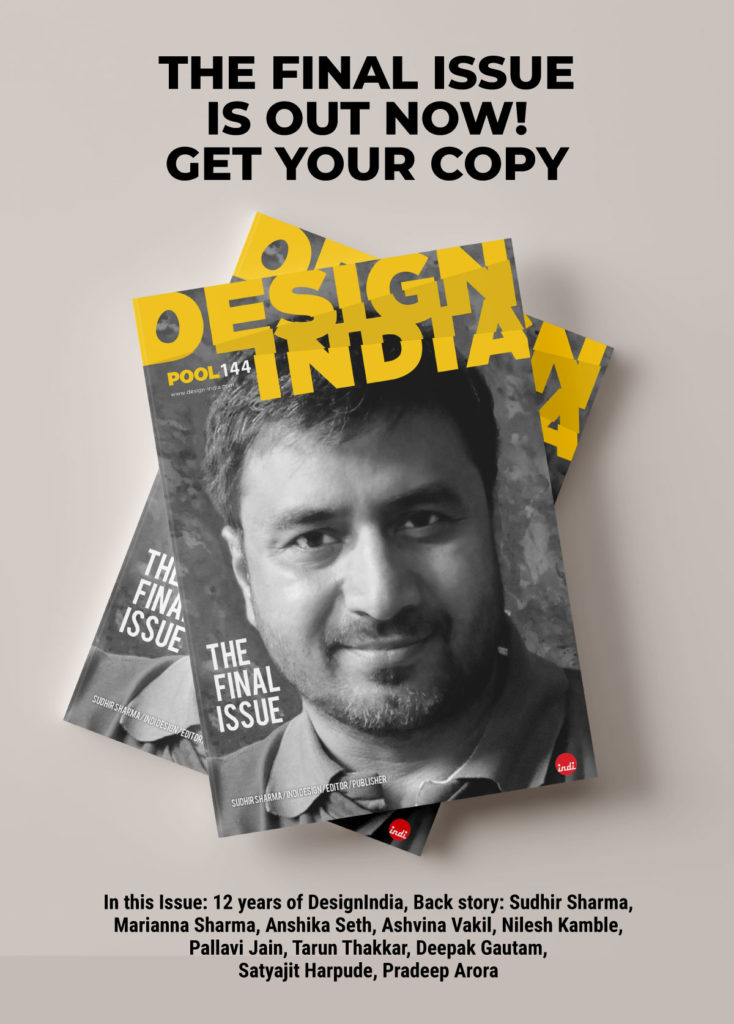
This month, we have Sudhir Sharma, one of India’s leading Designer, the CEO & founder of Indi Design, a internationally reputed Brand consulting firm and the Editor-in-chief of POOL Magazine as our guest. Sudhir has participated as a juror in many important international design and advertising awards including Cannes Lion, Adfest, Design Turkey, Dutch Design Awards, Design for Asia Awards. He expresses his views through a Q and A session on our NOVEMBER SPECIAL: LOW COST BRANDING & PACKAGING.
What do you think is the role of Branding and packaging in the low cost segment products in India?
Low cost is a misnomer, our understanding of low-cost products is primarily products meant for poor people. That is a category where generic products do much better volume business. But since most of the distribution and retail of generic products is dubious and unreliable, there is a growing preference for packaged goods. Though we have almost everything in packaged form as well now, brands have yet to surface. The market is extremely price sensitive; hence package and product get preference over brand as yet.
I feel high cost brands in low cost, small volume packs make much more sense at the moment. I still have to see a brand emerging in this segment.
Can you illustrate examples of frugal brand packaging in India which appeal to your senses.
Lowcost packaging for low cost products are at a meagre margin and mostly not for branding purpose. It is mostly to contain the product, safety and some assurance on quality. Plastic bags, with handwritten, or xeroxed labels is perhaps the most common. Most of these labels are letterpress printed.
Packaging for food, sweets, namkeen, and snacks specially when using vernacular languages is fascinating.
Does low cost brand’s packaging has any effect on consumer behavior?
Packaging has the same effect on consumer. Consumer feels the product is good, in right quantity and better quality. Infact packaging is the only branding for these products. Consumers in this segment will always be ready to try another brand as the product is very price sensitive.
We are exploring the consumer behaviour with low cost brands in our lab at Indi-Bikaner.
What came first? The chicken or the egg: the packaging or the consumer who buys it.
The consumer has always been there. First the shopkeepers tried packing on their own. Even now the most frugal packaging is house brands from the nukkad shops. I am not sure if any brands have emerged to beat this in price or quality yet. Many times this is also for the convenience of selling.
Will application of worldwide accepted design principles on Indian product packaging make any difference to the consumer behavior?
One: there are no such design principles, people who believe there are, don’t understand that packaging is culture dependent and not design dependent.
Two: there is no one India. India is a continent. many cultures and many market segments, categories together.
Three: Consumer behaviour is a very cultural consumption model. Indian product consumption is different and needs new principles to be explored.
Have you applied your understandings of this low cost segment branding in any of your projects?
Low cost segment is not brand conscious, it is packaging conscious. We are involved in a major study at the moment that will result in feasibility of sneaking in a brand for this segment. We are collecting understandings. We just completed a research project at Indi-research for an Australian company to launch its services in this segment in India. We are also experimenting with a no-name food brand packaging in low cost segment to see viability to go national.
How do such markets compete on the factor of visual appeal?
Visual appeal is minimal, and not such a priority, 90 percent packaging uses religious Images. it is also extremely vernacular, regional and contextual.
Is there a need to curate such a segment of packaging?
There is a need to study the consumer behaviour and collect case studies of success, curating such segment will help understanding how this segment is working. It is perhaps a minuscule enterprise segment, will be great to see how the knowledge from this segment is either used for larger brands or used for the same segment to grow.
What trends do you see emerging in the market?
A few observations are that even packaging material considerations in this segment are not governed by any regulation or rules. I believe there is a sales component that branded products have to bear, but no brand but packaged goods are exempt from all rules. So the decision of which material to use is price dependent. Most of the time inappropriate material is being used for packaging for this segment.
Published on Design Mela, 22 July 2012















